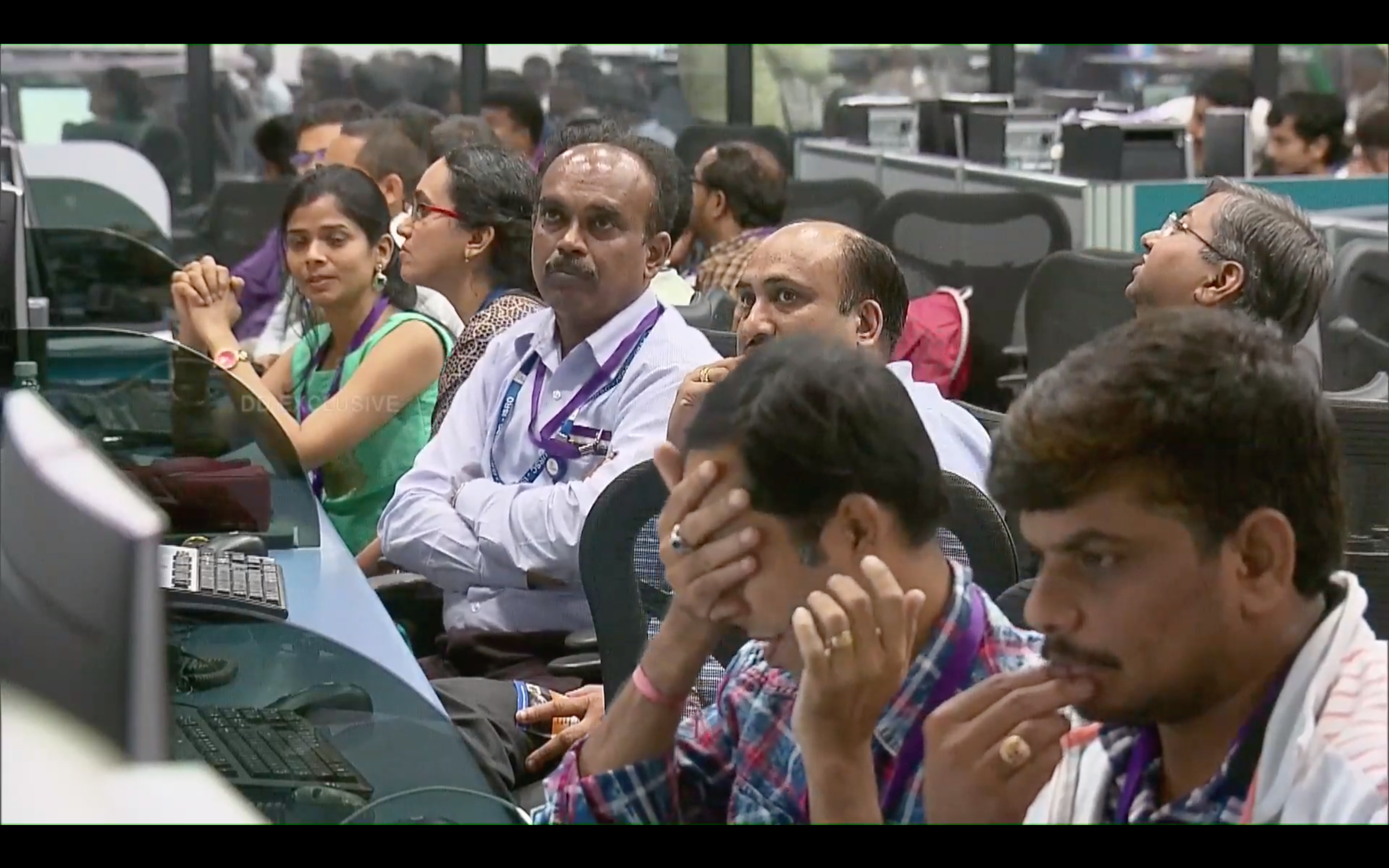India has found its Vikram lander after it crashed into the moon’s surface

Update: India says its orbiter has spotted the lunar lander on the moon's surface and is now trying to make contact with it, the AP reports. The agency lost contact with the Vikram lander moments before it was due to land.
What happened: The Indian Space Research Organization launched Chandrayaan-2 on July 22; it reached the moon’s orbit on August 20. It spent the last two weeks lowering its orbit in stepwise descents, before a lander (with a rover onboard) separated from the orbiter on Monday.
The lander, named Vikram after the famed Indian astronomer and ISRO founder Vikram Sarabhai, began its descent to the moon on the morning of September 1, local time. Moments before it was expected to touch down on the surface today, communications were lost––a sign that the lander had very likely crashed.
According to final telemetry readings during ISRO's live-stream, Vikram's final vertical velocity seems to have been around 58 meters per second from 330 meters above the surface––quite fast for a lunar landing. ISRO chief K. Sivan later said the lander performed as expected until about 2.1 kilometers (1.3 miles) in altitude. Still, its fate remains unclear.
Last known contact: The lander was attempting to descend to a point on the surface 375 miles (603 km) from the moon’s south pole, which would've made it the southernmost landing in lunar mission history. Scientists think the lunar south pole is home to an enormous cache of water ice, which could one day be mined and harvested to support habitats for lunar colonists or converted into rocket fuel for future spacecraft. Vikram and its six-wheeled rover Pragyan were expected to play a big role in investigating the extent of the ice deposits.
What’s next: ISRO is continuing to analyze the data and confirm the lander's fate, but the news is quite discouraging so far. The Chandrayaan-2 orbiter, however, will continue to carry out an array of studies from an altitude of about 62 miles above the lunar surface for at least a year.
Deep Dive
Space
How to safely watch and photograph the total solar eclipse
The solar eclipse this Monday, April 8, will be visible to millions. Here’s how to make the most of your experience.
How scientists are using quantum squeezing to push the limits of their sensors
Fuzziness may rule the quantum realm, but it can be manipulated to our advantage.
The race to fix space-weather forecasting before next big solar storm hits
Solar activity can knock satellites off track, raising the risk of collisions. Scientists are hoping improved atmospheric models will help.
Stay connected
Get the latest updates from
MIT Technology Review
Discover special offers, top stories, upcoming events, and more.